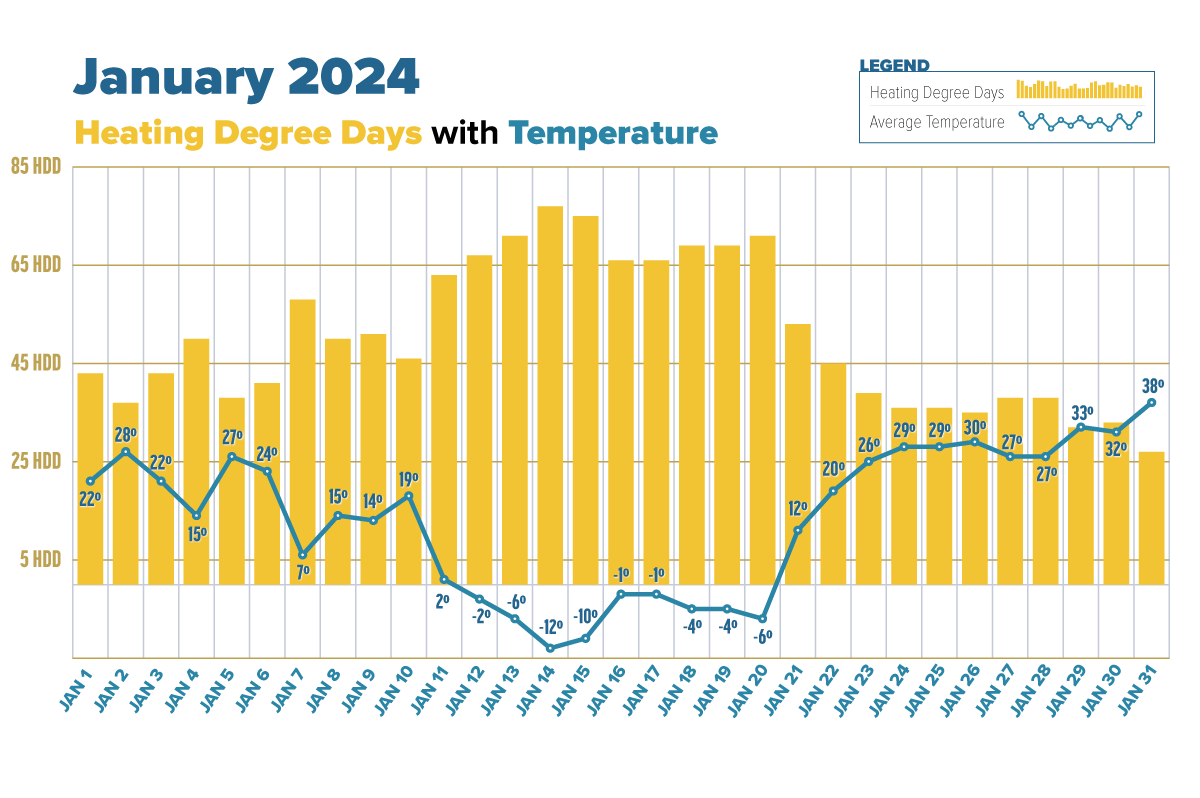What are heating and cooling degree days and how can they be useful to you as a Todd-Wadena Electric Cooperative member? Degree days are units of measurement used to indicate how warm or cool a location is at any point. The most common use of degree days is for tracking energy use.
The temperature of 65º is used as the baseline for calculating degree days because it is assumed that at 65º a person can be reasonably comfortable without any additional heating or cooling. The daily temperature for a specific location is compared to the baseline, and the difference is the Heating/Cooling Degree Days.
To calculate a heating degree day (HDD), subtract the average temperature for the day from 65. For temperatures below 0º, remember that subtracting a negative number is the same as adding a positive number (so 65º minus -5º = 70 HDD). To calculate a cooling degree day (CDD), simply subtract 65 from the daily average temperature.
Heating and cooling degree days are a local, geographic measurement. They are an effective way to generally assess how much energy (or demand) is required to heat or cool a building in a specific location, as well as understand changes in usage.
How Can Heating and Cooling Degree Days Be Used?
Below is a chart showing January’s data for our local region (Wadena, MN). The heating degree days (HDD) and the average temperature for each day are shown together for the period of January 1st-31st. Notice how on days when the temperature is low, the heating degree days are higher.
If you notice an increase on your energy bill/usage, check the heating degree day data for your location at www.degreedays.net. A high HDD over the billing period could explain the increase in energy usage. If the HDD has not increased or has even decreased, then other factors should be reviewed. There could be a human factor, mechanical issue, or even a building issue. Finding the root cause of any unexpected increase to your electric bill could save you time and money in the future.
Heating and cooling degree days can also help you see trends in your own household energy usage and assist in energy budgeting.

